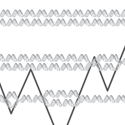Suckjoon Jun has always been obsessed with the remark by François Jacob, one of the founders of molecular biology, “The dream of every cell is to become two cells.” During his graduate studies in theoretical biophysics and soft-condensed-matter physics at Simon Fraser University, Canada, his main interest was physics underlying DNA replication. He then moved on to study DNA segregation at the FOM–Institute AMOLF in Amsterdam for his first postdoctoral assignment, where he showed theoretically that replicating chromosomes in E. coli and other bacteria can segregate, driven by their conformational entropy. He then had a brief affair with evolution and moved to Paris to work in Miro Radman’s laboratory at L’Hospital Necker until he arrived at Harvard in 2007. His physical biology laboratory is trying to understand the extent to which basic physical principles governing the fundamental biological processes involving chromosomes during the cell cycle.



